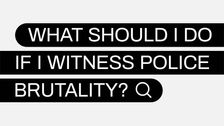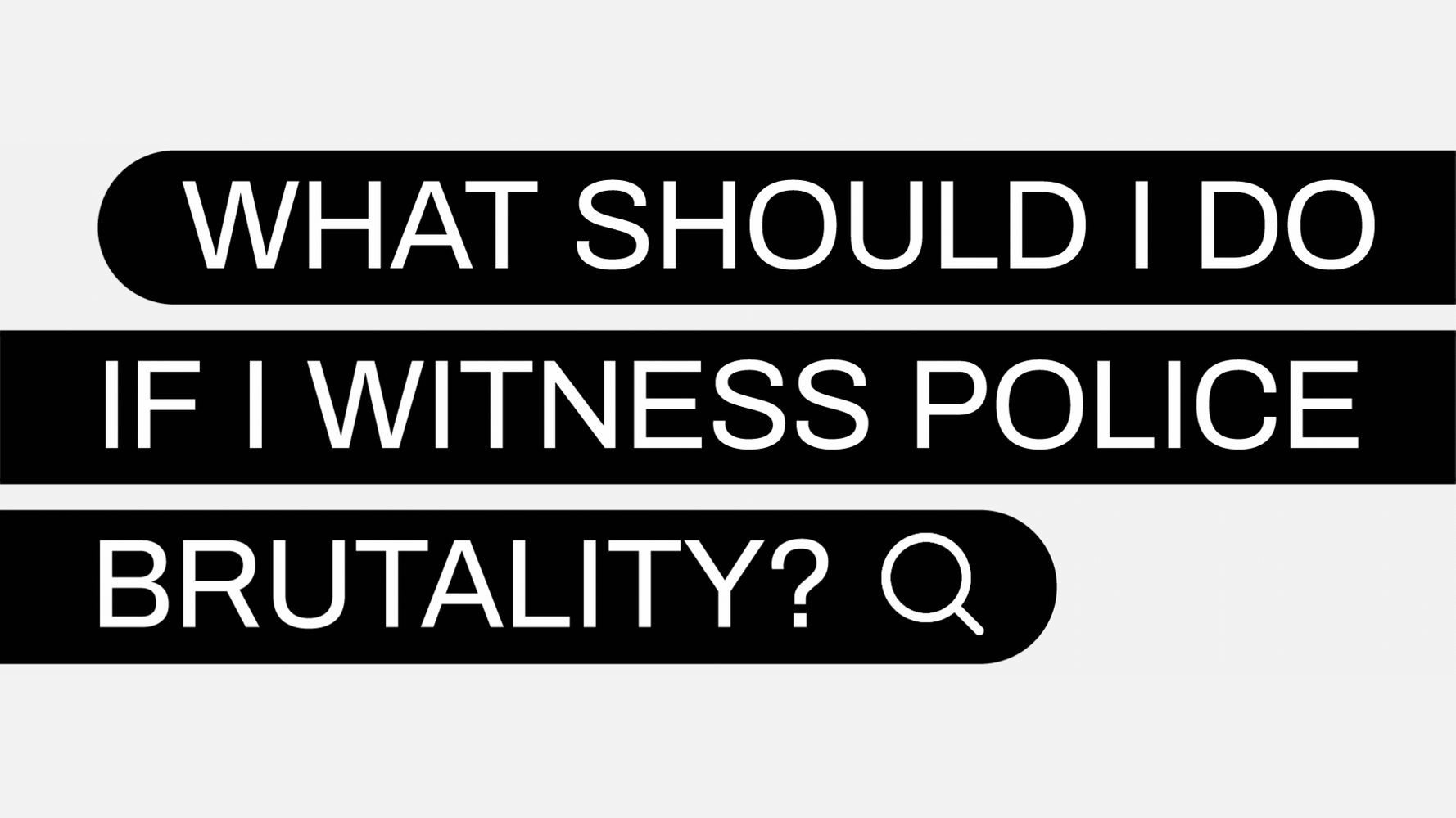[ad_1]

What should I do if I witness police committing violence?
The answer to this question is a bit complicated. It’s no secret that the current system that is supposed to hold police officers accountable largely protects them rather than the public they’re supposed to serve. This is especially true when the victim is Black or brown.
There have been too many instances when cops have used excessive force while their fellow officers stayed silent: In July 2014, other officers did nothing as Daniel Pantaleo suffocated Eric Garner, who kept repeating “I can’t breathe.” A nearly identical situation happened again at the end of May, when Derek Chauvin knelt on George Floyd’s neck, killing him, while three other officers watched.
Natasha Scruggs, a criminal defense and personal injury attorney based in Kansas City, Missouri, noted that in Floyd’s case, there were at least two 911 callers and a dispatcher on record voicing their concern about Chauvin’s force. Those 911 calls didn’t save Floyd’s life, but they did provide documentation, as did bystander footage, the release of which sparked the nationwide protests and helped lead to arrests and indictments of the officers involved.
One of the best things you can do if you are witnessing or experiencing police violence is to pull out your phone and start recording, Scruggs said. Citizens have a right to record, even if police will falsely claim you don’t, or tell you to move.
Documentation is also often the best recourse if charges are later brought against you or another person, as it can serve as evidence.
“You have rights when you’re pulled over,” she said, for example, “but those rights don’t matter until you get into a courtroom.”
What should I do while I am recording?
Palika Makam, senior program coordinator at Witness, an organization that helps people use video and technology to protect their rights, said that the most important thing you should consider when documenting police misconduct and violence is your safety. Bystanders who film may become the target of police violence themselves.
Try to stand 6 feet away while recording. As long as you don’t interfere with the situation, you have the right to record. She also noted that this is true regardless of immigration status, as police may ask about citizenship.
Hold your camera so that you capture as much visual and audio information as possible, and try to avoid saying anything on camera that could appear biased. She advised that people narrate what’s going on similar to a sports commentator. Try to capture details like badge numbers, license plates, uniforms, date and time.
If the police ask you to move, make it clear in the footage that you’re complying by showing your feet walking back and stating that you are backing away. But talking while recording isn’t a requirement, Makam said. Sometimes silence is most powerful.
Makam also suggested locking your phone with a six-digit passcode, since the Fifth Amendment protects citizens from having to share that information during a legal search or proceeding. The law is a bit murky when it comes to phones with no passcode or phones that can be unlocked with facial recognition or the owner’s fingerprint. There have been cases where police officers have been able to skirt the Fifth Amendment and obtain access to phones without the owner’s consent.
Makam suggests taking a beat before posting on social media.
“This type of work, documenting, viewing traumatic images, they take a toll on a person emotionally,” she told HuffPost. “So I think it’s important to check in with yourself before you even review the footage to see what you captured.”
She said there are also strategic reasons to wait, “in order to make sure your footage makes the biggest impact.”
Makam said that it’s smart to reach out to advocacy groups to figure out how to release the footage. This could mean doing so anonymously, because bystanders who record sometimes become the target of retaliation — like Ramsey Orta, the man who filmed Garner’s death and the only person on the scene who served time in prison afterwards.
Besides filming, what are some other alternatives to calling the police?
Scruggs, who’s also a prison abolition activist, said she’s noticed that most of the people filming police misconduct when she’s in the field are Black or other people of color. Because of how police disproportionately target these groups, her primary and sobering advice about intervention is to “just try to end up alive.”
If police do arrest you for filming or otherwise intervening, it’s best to go to the station, post bail, get an attorney ASAP, then try to fight it in court. “If you try to fight a cop on the street,” she said, “the person with the gun and backed by the the state will have the upper hand.”
Makam said that she’s also witnessed white allies, who have more privilege, physically intervene to block people of color from police brutality.
“We’ve seen this throughout history,” she said, “but I do think it’s a powerful option if you do have the privilege and the comfort.”
So if we can’t truly police the police, what can be done?
The most effective way to check the police is through community efforts, Scruggs and Makam said. And each community is unique, with different needs.
Scruggs said during the Civil Rights era, people used to follow the police to make sure they didn’t kill the person in custody.
Additionally, she said, people ― especially those who are white ― need to get uncomfortable with leaning on 911, because it puts people who are disempowered ― especially those who are Black ― at risk. When police are called for mental health checks or other non-criminal issues, escalation becomes a real possibility.
“When the people committing that abuse are state actors themselves, it really makes you realize that the real people you can call on for help is your community, not the police,” said Makam. “Bearing witness and documenting abuse, organizing mutual networks, supporting advocacy organizations and legal aid organizations are so crucial to our health and safety and survival.”
Where can I go for more information and resources?
[ad_2]
Source link

